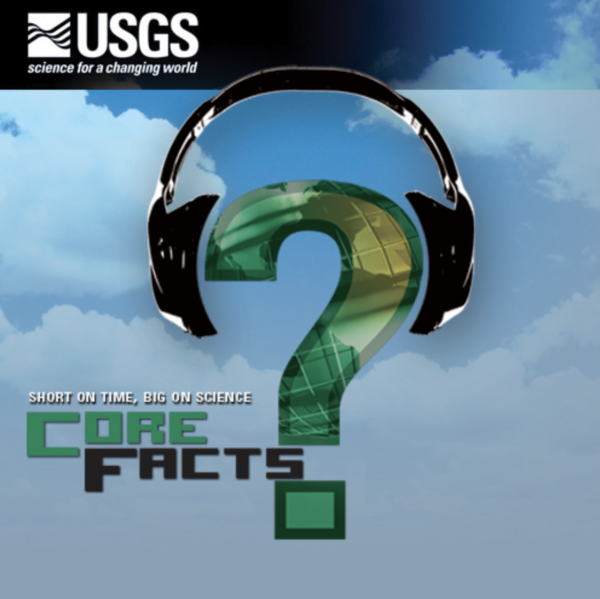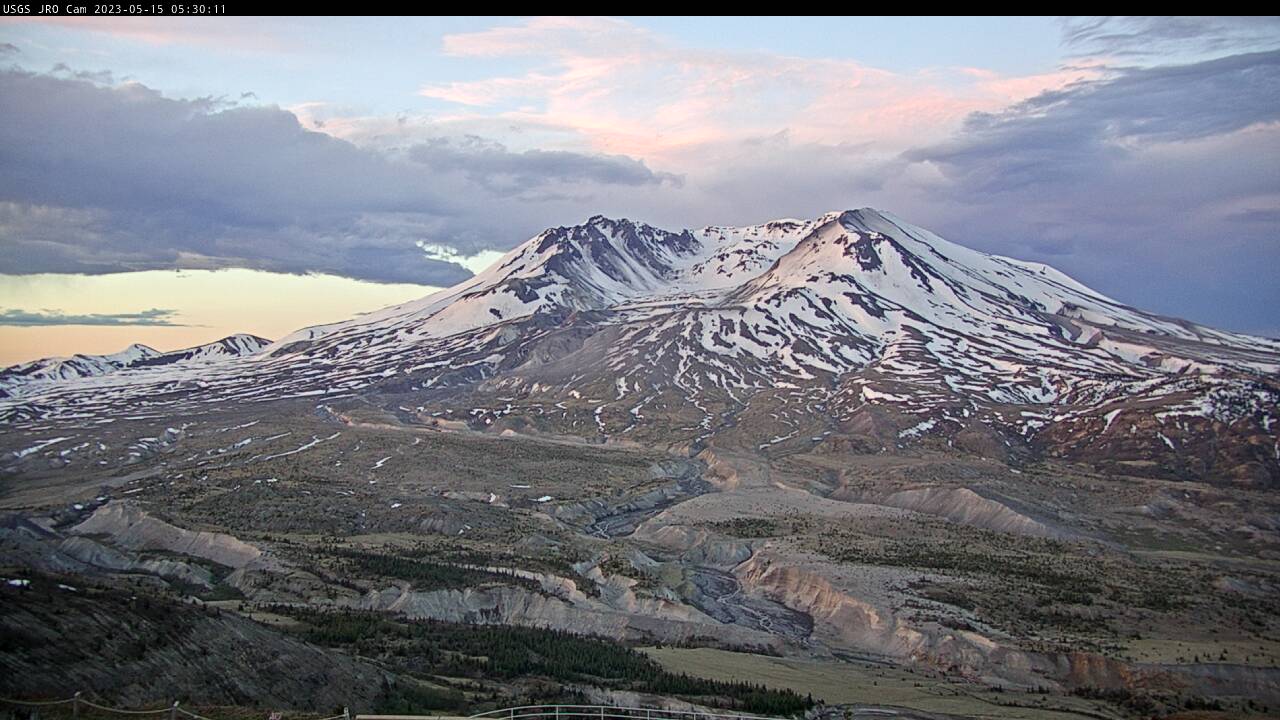Mount St. Helens: Land of Transformation video shows the changes to the landscape from before the May 18, 1980 eruption to today (2024).
Multimedia
Images
Mount St. Helens: Land of Transformation video shows the changes to the landscape from before the May 18, 1980 eruption to today (2024).
Mount St. Helens by A. Mosbrucker. Looking SE towards the volcano up the valley.
Mount St. Helens by A. Mosbrucker. Looking SE towards the volcano up the valley.

USGS Cascades Volcano Observatory Physical Science Technician Brian Meyers installs a data telemetry antenna on a volcano monitoring station at Mount St. Helens. A DOAS scanner is mounted above the flat-panel antenna at the top of the mast.
USGS Cascades Volcano Observatory Physical Science Technician Brian Meyers installs a data telemetry antenna on a volcano monitoring station at Mount St. Helens. A DOAS scanner is mounted above the flat-panel antenna at the top of the mast.

USGS scientist Laura Clor performing maintenance on the SNIF multi-GAS station on Mount St. Helens, Washington.
USGS scientist Laura Clor performing maintenance on the SNIF multi-GAS station on Mount St. Helens, Washington.

Interior of the SNIF multi-GAS enclosure on Mount St. Helens, Washington
Interior of the SNIF multi-GAS enclosure on Mount St. Helens, Washington

This photo shows an outcrop of pyroclastic flow deposits near Willow Creek on the Pumice Plain at Mount St. Helens. The dramatic lines crossing the outcrop indicate contacts between different layers of pyroclastic flow deposits. Two participants of the 2019 GeoGirls program are shown studying the outcrop, using it to understand the eruptive history of the volcano.
This photo shows an outcrop of pyroclastic flow deposits near Willow Creek on the Pumice Plain at Mount St. Helens. The dramatic lines crossing the outcrop indicate contacts between different layers of pyroclastic flow deposits. Two participants of the 2019 GeoGirls program are shown studying the outcrop, using it to understand the eruptive history of the volcano.
Videos
 Ways the 1980 Mount St. Helens Eruption Changed Our World (AD)
Ways the 1980 Mount St. Helens Eruption Changed Our World (AD)
The May 18, 1980, eruption of Mount St. Helens was historic and fundamentally changed how we see volcanoes. For those who lost family and friends, homes, and their livelihoods, it was an unimaginable tragedy. For others around the world, the eruption was an exciting curiosity, an experience they could share with their kids and grandkids.
The May 18, 1980, eruption of Mount St. Helens was historic and fundamentally changed how we see volcanoes. For those who lost family and friends, homes, and their livelihoods, it was an unimaginable tragedy. For others around the world, the eruption was an exciting curiosity, an experience they could share with their kids and grandkids.
 Ways the 1980 Mount St. Helens Eruption Changed Our World
Ways the 1980 Mount St. Helens Eruption Changed Our World
The May 18, 1980, eruption of Mount St. Helens was historic and fundamentally changed how we see volcanoes. For those who lost family and friends, homes, and their livelihoods, it was an unimaginable tragedy. For others around the world, the eruption was an exciting curiosity, an experience they could share with their kids and grandkids.
The May 18, 1980, eruption of Mount St. Helens was historic and fundamentally changed how we see volcanoes. For those who lost family and friends, homes, and their livelihoods, it was an unimaginable tragedy. For others around the world, the eruption was an exciting curiosity, an experience they could share with their kids and grandkids.
May is Volcano Awareness Month in Washington State. There's no better time to learn five incredible facts about Mount St. Helens. This list is a truncated version of the popular 30 Cool Facts about Mount St. Helens (usgs.gov) poster.
May is Volcano Awareness Month in Washington State. There's no better time to learn five incredible facts about Mount St. Helens. This list is a truncated version of the popular 30 Cool Facts about Mount St. Helens (usgs.gov) poster.
May is Volcano Awareness Month in Washington State. There's no better time to learn five incredible facts about Mount St. Helens. This list is a truncated version of the popular 30 Cool Facts about Mount St. Helens (usgs.gov) poster.
May is Volcano Awareness Month in Washington State. There's no better time to learn five incredible facts about Mount St. Helens. This list is a truncated version of the popular 30 Cool Facts about Mount St. Helens (usgs.gov) poster.
Title: Mount St. Helens Revisited: Lives Changed, Lessons Learned, and Legacies of the 1980 Eruptions
By Carolyn Driedger, USGS Hydrologist & Outreach Specialist
Title: Mount St. Helens Revisited: Lives Changed, Lessons Learned, and Legacies of the 1980 Eruptions
By Carolyn Driedger, USGS Hydrologist & Outreach Specialist
 Status of (mostly) WA Volcanoes: Report to Emergency Managers 2020-21
Status of (mostly) WA Volcanoes: Report to Emergency Managers 2020-21
Jon Major, scientist-in-charge of the USGS Cascades Volcano Observatory, provides an overview of the major volcano hazards in the Cascades, the function and responsibilities of the Cascades Volcano Observatory, and a brief synopsis of what's been going on at Mount Baker, Glacier Peak, Mount Rainier, Mount Adams, Mount St.
Jon Major, scientist-in-charge of the USGS Cascades Volcano Observatory, provides an overview of the major volcano hazards in the Cascades, the function and responsibilities of the Cascades Volcano Observatory, and a brief synopsis of what's been going on at Mount Baker, Glacier Peak, Mount Rainier, Mount Adams, Mount St.
Audio
Welcome to CoreFacts, where we're always short on time and big on science. I'm Brian Campbell. Today's question is …
How far did the ash from Mount St. Helens travel?
Welcome to CoreFacts, where we're always short on time and big on science. I'm Brian Campbell. Today's question is …
How far did the ash from Mount St. Helens travel?
Listen to hear the answer.
Listen to hear the answer.
Webcams
A debris flow in Mount St.








